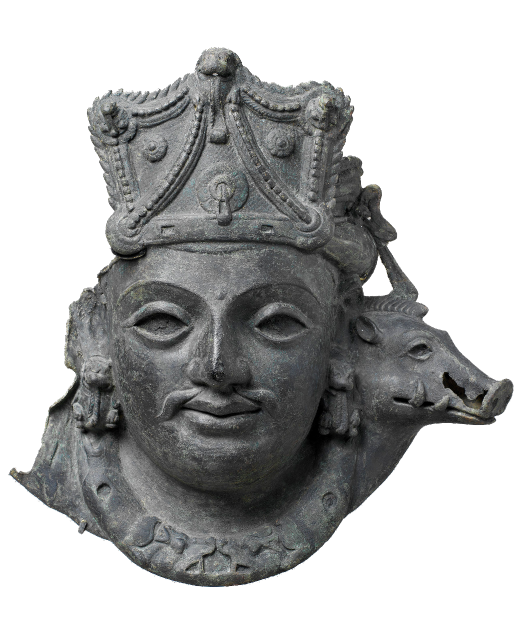PERSPECTIVES
Beyond the Visible: ‘Dhvani’ in Visual Arts
Ever looked at an art work and felt something but couldn’t understand why? Perhaps it evoked a sense of nostalgia or induced a sense of calm. Maybe it triggered a visceral reaction or exerted an unexplained, emotional pull. That indescribable feeling is what Indian philosophers call the effect of dhvani, which ordinarily means “sound,” with a specific tone, duration, timbre, and resonance.
In art, dhvani goes beyond the literal meaning of the word. K Krishnamoorthy’s article, ‘Dhvani’ or Suggestion: A Study in Perspective, examines the notion of dhvani as the power of “suggestion” or “resonance” in Indian aesthetics and poetics. His work emphasises the emotional impact of language in poetry, suggesting that true understanding arises from the resonance of meaning arising within. The suggestive power of language parallels how other art forms, such as painting, sculpture, and music can also evoke deep emotions and thoughts in their audience.
Rasa is the emotional experience evoked in the audience by using the suggestive power of dhvani. Just like a chef uses spices to create a complex flavour profile, a poet or artist uses dhvani to make an artwork that is layered with emotions and subtext. For instance, a painter like Abanindranath Tagore may have used soft brushwork and a subtle colour scheme to evoke a certain feeling or mood with his painting The Journey’s End.
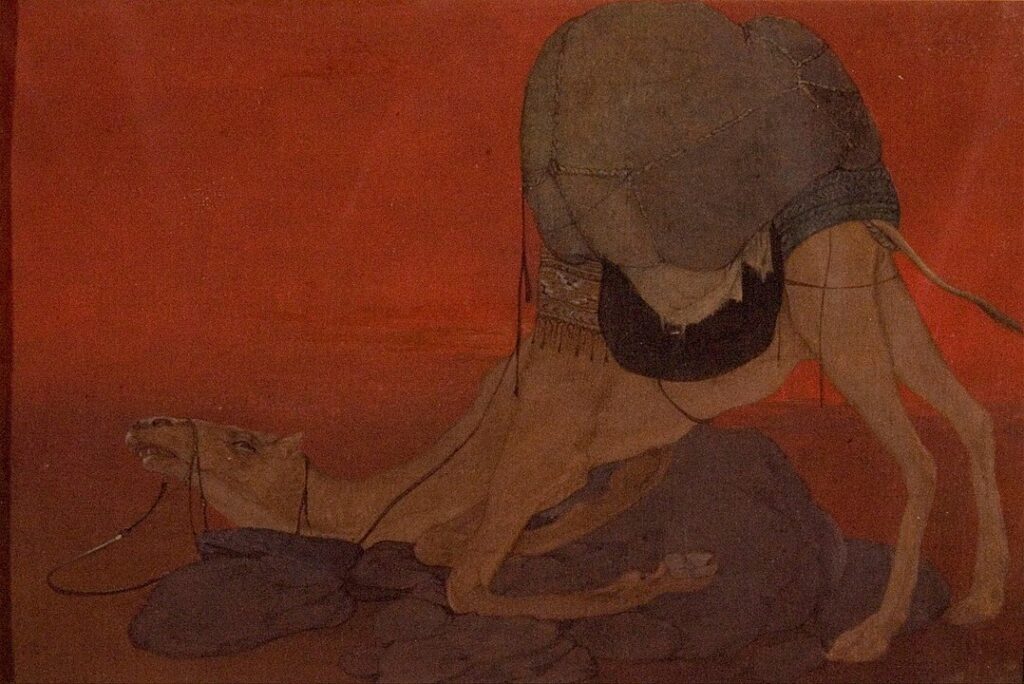
Similarly, a sculptor might use form and texture to suggest movement or feeling, for instance in Ramkinkar Baij’s Mill Call (1956). In music, dhvani is present in the nuances of melody, rhythm, and harmony that evoke an emotional response in the listener, such as in the Tamil song Enna Thavam Seithanai, released in 1992 and sung by Sudha Ragunathan.
Krishnamoorthy’s article references a verse to explain the concept.
ustrânâm ca vivâhesu gïtam gâyanti gardabhâh parasparam prasarhsanti aho rûpamaho
“When camels to marry proceed
Donkeys provide music indeed!!
Each doth the other greet:
‘How handsome!’ ‘How sweet!’”
An analysis of the text reveals that the verse emphasises that true compliments can only come from those with greater knowledge and experience. The example illustrates how words are processed, spelled, imagined, and understood, living in the space between the literal and the metaphorical. For instance, “fire” can describe a hot-tempered person, “donkey,” a dull-witted one, and “pigeon pea” can refer to someone weak and sluggish.
Classical art grounded in Indian sensibilities, from the Gita Govinda series and Kangra paintings to the works of Raja Ravi Varma, frequently do weave together visual and literary elements to evoke deeper meaning. These works showcase the richness of Indian aesthetics, where the outer form acts as a pathway to inner beauty and profound significance.
The 18th century Kangra painting depicting Jayadeva’s Gita Govinda, where Radha approaches Krishna and is guided by her sakhi (friend), beautifully embodies the concept of dhvani. Radha’s hesitant stance, poised between approach and retreat, speaks to her inner turmoil. The sakhi’s gentle embrace and expressive gesture amplify the underlying tension and anticipation. These visual cues correspond to the emotional depth of the final verse of the poem.
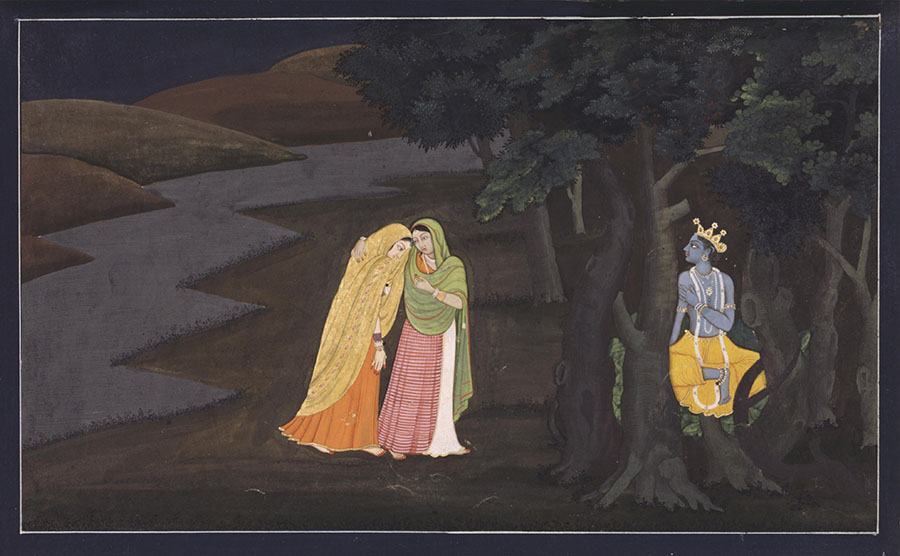
Meanwhile, Krishna’s presence at the edge of the frame subtly anticipates what comes next, creating a layered narrative experience. His glowing form, illuminating the dark bower, symbolically highlights the divine presence and the transformative power of love. The interplay of light and shadow, combined with the expressive figures, creates a powerful visual dhvani.
Raja Ravi Varma’s series of paintings based on Kalidasa’s Abhijnanasakuntalam also present a captivating visual interpretation of the play’s narrative and emotional core. Varma masterfully “suggests” Shakuntala’s inner emotional landscape through subtle expressions and evocative body language.
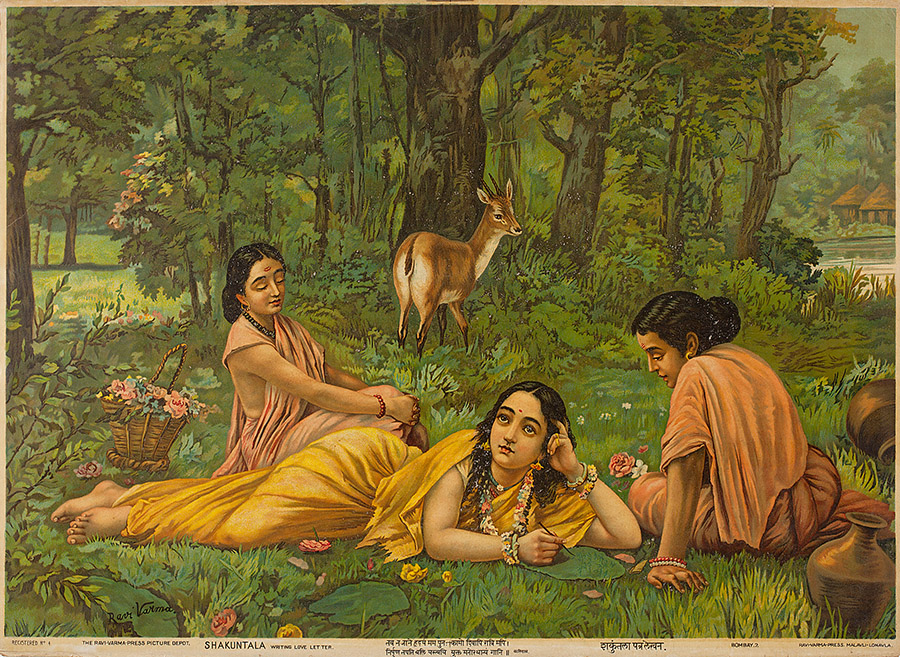
In the painting, Shakuntala’s pose and pensive gaze as she writes Dushyanta’s name on a leaf captures the intensity of her love. This act becomes a visual metaphor for her deep affection, echoing the character’s unspoken emotions in the play.
Another painting portrays Shakuntala lost in contemplation, her tranquil expression and introspective mien reflecting her emotional preoccupation with Dushyanta that leads her to ignore her immediate surroundings. This is dhvani as the “soul of poetry,” evoking emotions beyond literal representation. Varma’s fusion of classical Indian aesthetics with Western realism allowed him to capture the essence of Kalidasa’s work, creating a visual resonance that mirrored the play’s emotional depth.
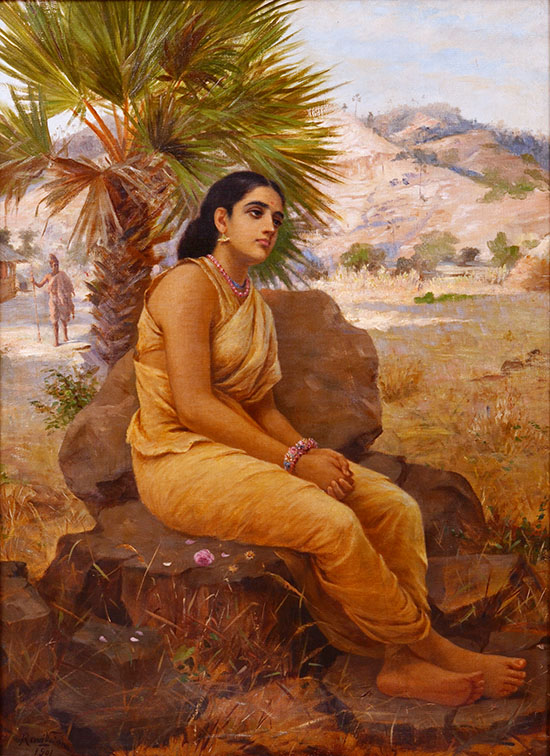
However, dhvani is applicable to not only classical paintings and subject matters that are deeply rooted in ancient Indian aesthetic theories. It is equally relevant to modern, contemporary art and across mediums and subjects, including installations.
For instance, Vivan Sundaram’s powerful installation 12 Bed Ward, seen through the lens of dhvani theory reveals a poignant exploration of memory, trauma, and the human condition. The setting, a recreation of a derelict refuge, immediately evokes feelings of confinement. The bare empty beds serve as a powerful dhvani, signifying absence and the removal of identity within institutional walls. The decaying environment further strengthens this sense of neglect, hinting at forgotten stories and the passage of time.

The artist’s incorporation of found objects and personal artefacts trigger a cascade of emotions and associations. These fragmented remnants mirror the fractured memories of past inhabitants, inviting viewers to piece together their own interpretations. This aligns with the concept of dhvani, where suggested meaning arises from the interplay between the artwork and the viewer’s experience.
Similarly, the interplay of light and shadow evokes an atmosphere of mystery and introspection. Much like Kalidasa’s evocative imagery in Abhijnanasakuntalam, 12 Bed Ward also uses dhvani to evoke empathy and understanding by creating a resonance with the viewer’s own feelings of loss and vulnerability. He leaves space for individual interpretations and in the process makes a powerful and enduring work that continues to haunt the viewer long after they first encounter it.
Peddinti Sri Kavya is an Art History enthusiast with experience in curation and teaching Art History and Aesthetics. Her approach involves linking historical and philosophical ideas to modern and contemporary artistic expressions.
